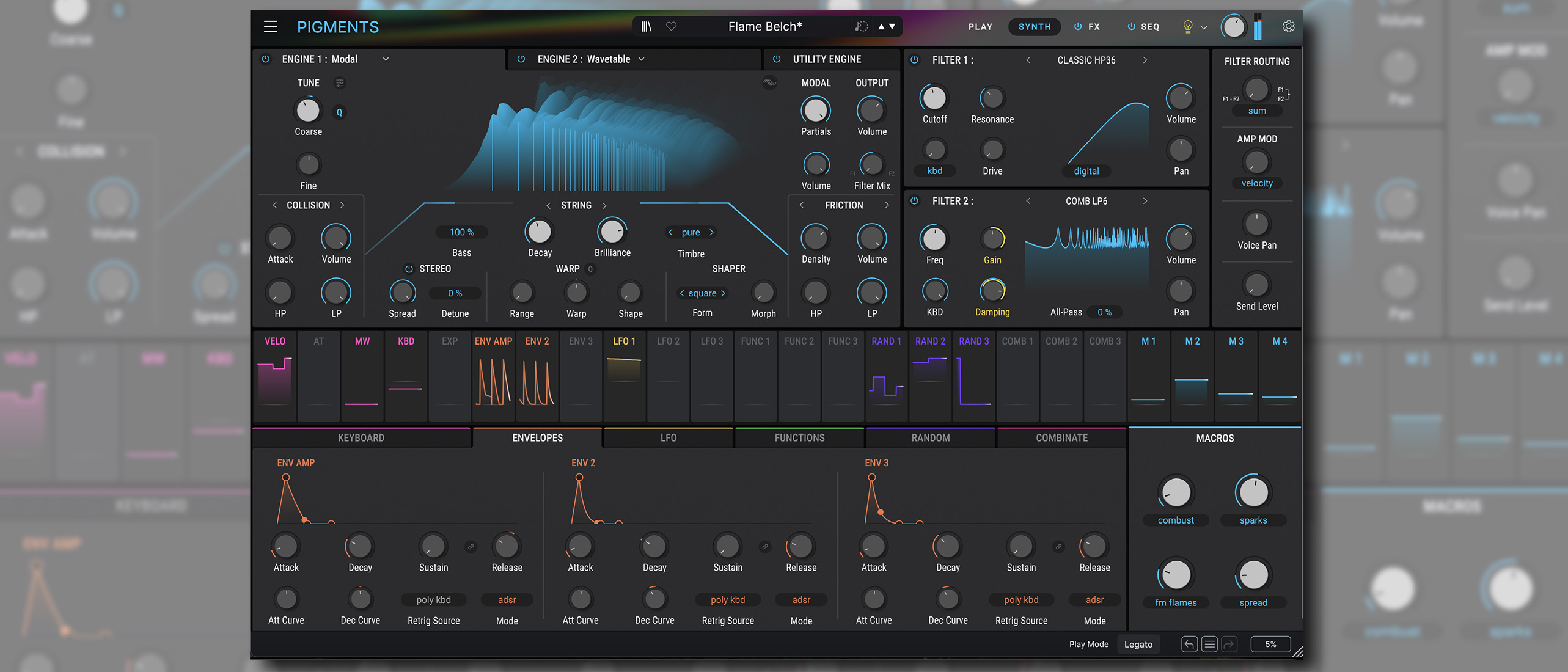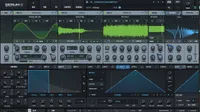MusicRadar Verdict
Six iterations on from launch, Pigments offers versatility and depth beyond any other synth on the market right now.
Pros
- +
Dual multi-functional synth engines offer remarkable versatility.
- +
Modulation and filter tools cover everything from bread-and-butter sounds to abstract creativity.
- +
Substantial annual upgrades that are free for existing users.
Cons
- -
Potentially overkill for simpler synth patches.
MusicRadar's got your back
When Arturia’s Pigments synth launched back in 2018, it was already built on pretty solid foundations. Combining elements of wavetable and virtual analogue synthesis, the original Pigments took much of what the French developer had learned via two decades of slowly expanding and updating its V Collection emulations, and applied it to an original instrument designed to hold its own against ‘power synths’ like Serum or Phase Plant.
Since launch, the capabilities of Pigments have expanded significantly, thanks to a regular stream of annual updates that have, laudably, all arrived as free upgrades for existing owners.
These releases have varied in how substantial they are – ranging from the sample engine added for Pigments 2 to the CPU and UI improvements of v4 – but each iteration has expanded and refined the synth to the point that it's now one of the best sound design tools around.
Pigments 6 arrived in January 2025 and is one of the most significant upgrades since the synth first launched. Not only does this latest version add a new oscillator engine based around physical modelling synthesis, but expands the instrument’s capabilities with the addition of a vocoder, improved granular capabilities and an expanded range of filter and modulator options.
What is it? The core of Pigments
For those new to Pigments, the core of the synth is its ‘engine’ system, which allows users to mix and match two multi-oscillator sound engines each making use of a different approach to synthesis.
The various engines are capable of virtual analogue, wavetable, additive or sample-based synthesis, the latter of which includes one-shot and multi-sampled instruments, as well as granular synthesis capabilities. Added to these for version 6 is the new Modal engine, which brings physical modelling into the mix.
These two core engines are joined by a third Utility engine, which is effectively an additional VA oscillator (that can be used as a sub) plus two noise sources. It’s designed to play a supporting role, but can be very important, in processing external audio, for example.
Want all the hottest music and gear news, reviews, deals, features and more, direct to your inbox? Sign up here.
These engines feed into a dual filter section that can make use of a wide variety of filter designs, ranging from straightforward multi-mode filters through to analogue modelled designs and creative tools such as comb and formant filters.
Pricing
- $199/€199, rent to own available from $9.99 per month
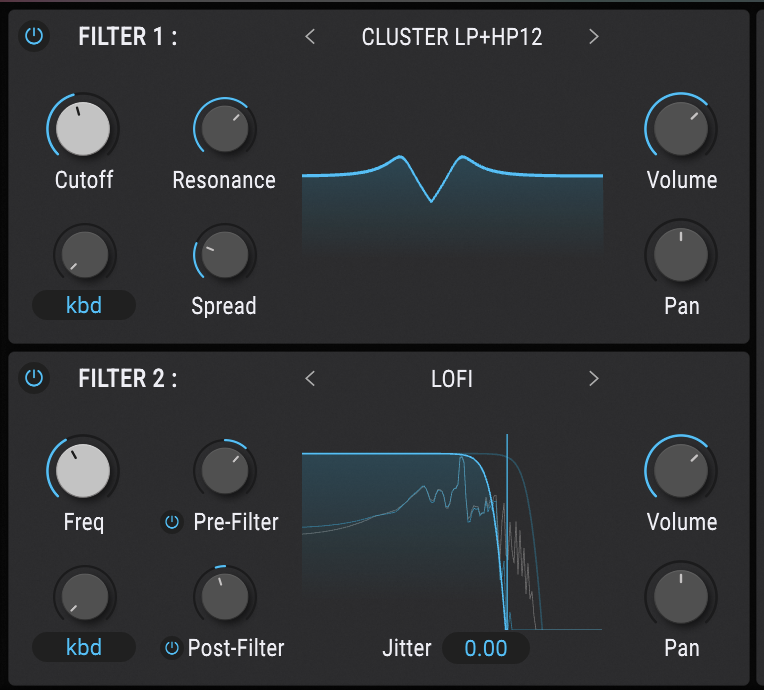
Other highlights of the synth include its comprehensive effects section and easy-to-use modulation system – which owes a debt to the click-to-assign simplicity of Massive and Serum before it.
Ever since v1, a particular highlight of Pigments has been its virtual analogue elements, which are found in the Analog engine, but also in various filter and effect models.
Arturia has a long history recreating analogue hardware for its V Collection synths and that shows in the quality here, which nods to a multitude of vintage classics with elements such as Moog-style ladder filters and Juno chorus.
There are also numerous wavetable options that draw on sounds akin to classic hardware. All of which adds up to making Pigments a solid emulation tool to rival a synth like U-He Diva, as well as being able to tackle the more cutting-edge sounds of Massive X or Serum.
New for version 6
The headline feature of Pigments’ v6 update is its new Modal engine. This is based around the concept of physical modelling, which replicates the behaviour of an object resonating in a physical space, making it perfect for emulating sounds such as plucked strings or mallets.
Physical modelling instruments work using two elements: an exciter, emulating the collision that triggers the initial sound, and a resonator, which generates the subsequent vibrations.
Pigments’ Modal engine offers two forms of exciter. The first is labelled Collision Exciter, which emulates an impact like the plucking of a string or the beating of a drum. The second are the Friction Exciters, which emulate an ongoing impact more like a bowed stringed instrument.
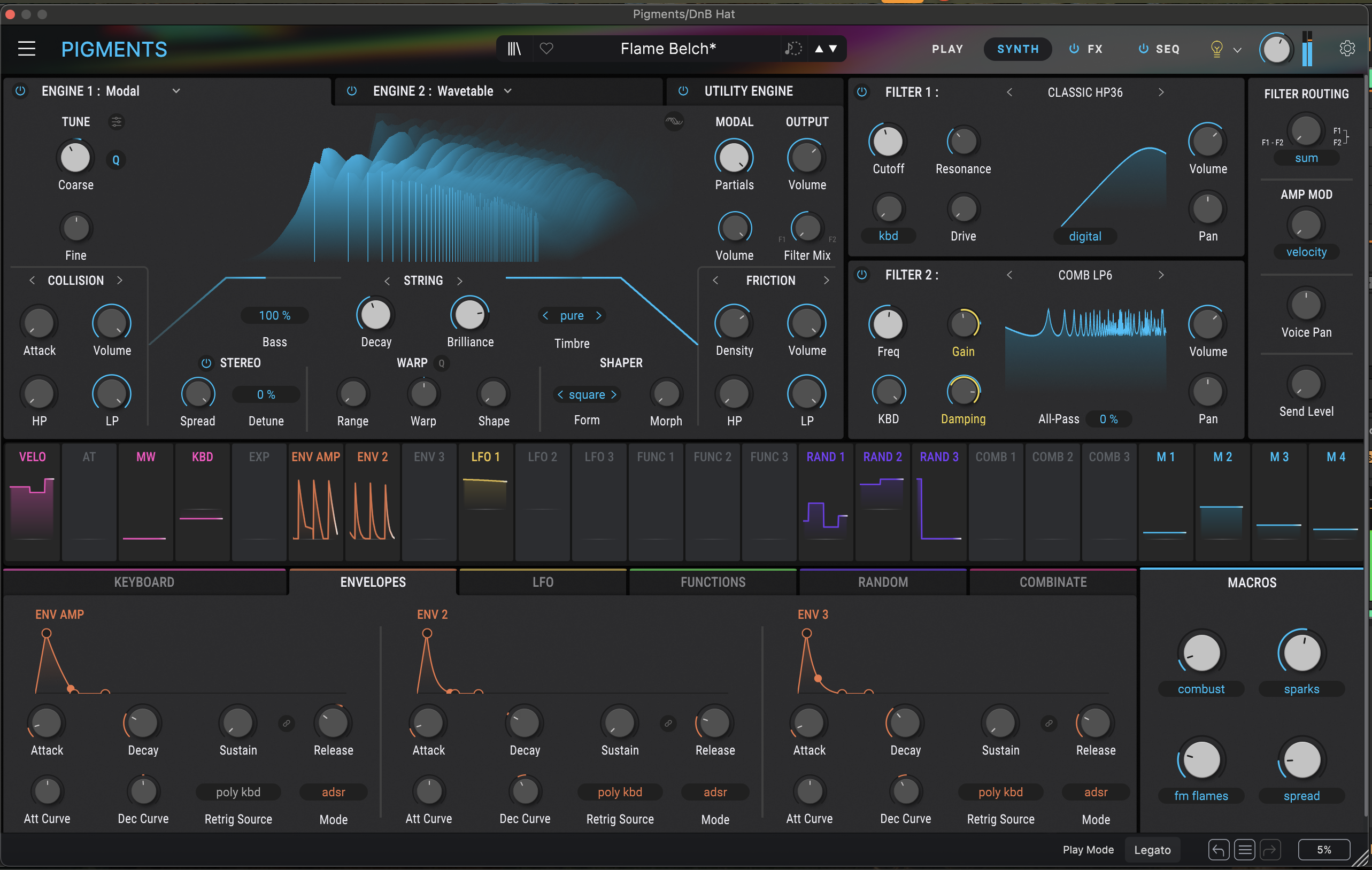
These two exciter elements can work in tandem, and each can be switched to use a variety of different modes. The Collision module can make use of a synthesized exciter, a sampled transient or an external audio input. Friction uses either randomised impulse generation, sampled noise, granular synthesis or an external audio input.
The resonator section itself is equally flexible. This uses two styles of resonating object – beam and string – each with six timbre options on offer for further variation. The sound can then be further manipulated using Stereo Spread, Warp and Shaper controls, which apply additive synthesis techniques to the output sound.
As with the other synthesis approaches applied within Pigments, you can find deeper and more complex takes on physical modelling in dedicated plugins such as Chromaphone. The Modal engine still manages to be impressively comprehensive within its confined UI though, and there’s a broad spectrum of sounds that can be created, even if you were to use the engine as a standalone synthesizer.
The fact that it can be used alongside – and interact with – Pigments’ other elements, magnifies its potential exponentially. After seven years of updates, those other elements are now an exceptionally well-rounded suite of tools.
The filter section now offers 13 different styles of module, covering functional designs, creative sound shaping and vintage emulation. Version 6 adds tools for each of these use-cases, with an upgraded multimode filter, a cluster – aka multi-peak – filter and a new lo-fi design, which has a lovely grungy tone great for over-saturated, old school dance music.
The new vocoder in the effects section is another welcome addition. This has vintage, modern and dirty tonality modes and a decent level of control over factors such as bandwidth, output frequency and formants. It works nicely for those classic robotic vocal sounds, but is arguably more fun when used with Pigments’ internal synthesis engines or external audio – particularly when applied to percussive and rhythmic sounds.
My personal favourite of Pigments 6’s new additions is the Voice Modulator added to the random modulation section. This generates a different output value for each new incoming MIDI note, set to cycle by a value between 1 and 8 notes.
Used subtly, this can be a neat tool for introducing analogue-like variations in tuning and tonality, but pushed further it can act like the round robin voice cycling of Korg’s classic Mono/Poly, whereby each new synth note triggers its own voice with distinct tuning and waveshape functionality.
Performance
For my money, Pigments is the best softsynth on the market right now. For the sheer breadth and versatility of tools it offers, there’s nothing else that can compete.
The likes of Xfer Serum and Kilohearts Phase Plant are in a similar ballpark – and both are top-tier instruments in their own right. The former, however, puts more focus on wavetable and sample-based synthesis than Pigments, going a little deeper in those areas, but falling short of the overall versatility.
Phase Plant, on the other hand, puts more emphasis on modular flexibility, but loses a little of Pigments’ user friendliness in the process. The same could be said for Native Instruments' Massive X.
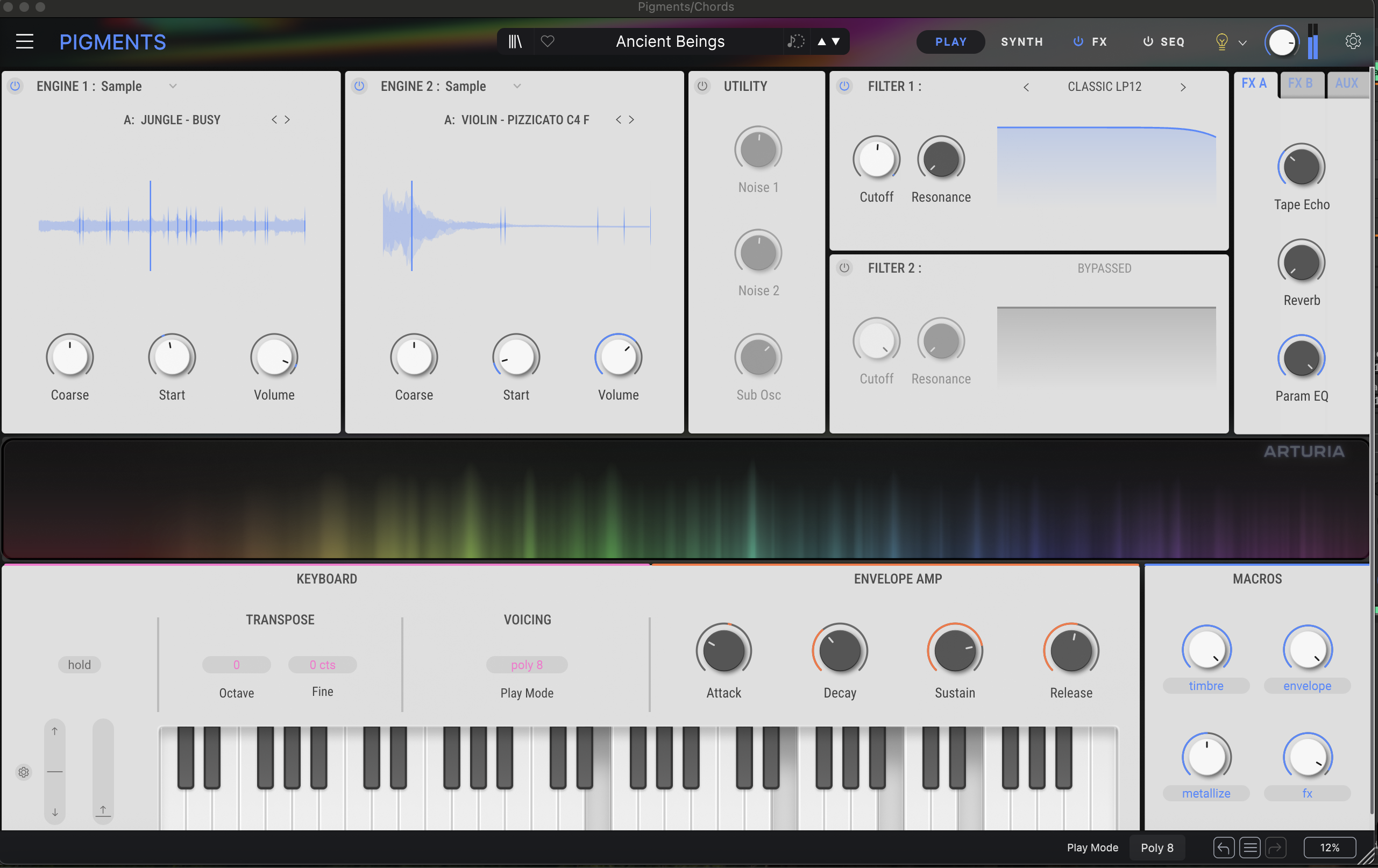
This latter front is another of Pigments’ strongest assets. For all the depth of its expanding capabilities, its approachability has remained intact since launch.
In fact, it’s only got more user-friendly, thanks to the addition of the simplified ‘Play’ UI added with Pigments 4. This gives users access to surface-level sound shaping without the need to unpick the more complex elements of a patch.
The Play view works in tandem with Pigments’ well stocked and organised preset library, as well as its macro control system, to make it a powerful source of varied and useable sounds, even for those not interested in designing sounds themselves.
This is certainly helpful. If there's a criticism you can level at Pigments, it would be that it can occasionally feel like overkill, if all you're after is a simple synth tone.
Although opening an initialised patch disables the bulk of the modulation routings and additional capabilities, there's still a lot of synth to wade through if all you need is a simple two-oscillator bass patch or a simple pad.
Conclusion
For those that are looking to design sounds from scratch, Arturia’s synth is a true sandbox. Arguably, the risk for Arturia at this point is that Pigments is becoming so powerful that it’s making the company’s V Collection look increasingly obsolete.
While the recreated UIs and authentic designs of those emulations will still appeal to many, there’s increasingly little in that vintage synth collection that couldn’t be convincingly recreated in Pigments.
In its current form, Pigments can create provide analogue polysynth tones, the lo-fi wavetables of early digital synths, and even the low-pass gates and wavefolding oscillators of East Coast synthesis.
At version 6, Pigments is a true power synth in every sense, and one of the finest pieces of music making software around.
Alternatives
A modern classic, recent refreshed and rearmed. A hugely powerful sound engine combined with lifetime free updates makes Serum a genuine must-have for electronic music makers.
Specifications
Key features | Two engines in parallel Modal physcial-modeling engine Complex Wavetable engine Granular and Sample engine Harmonic Oscillator additive engine Virtual Analog triple-osc engine Includes Engine Cross- modulation Utility Engine 5-shape Virtual Analog Oscillator 2 Noise Engines External audio input Two filters 13 modern filter types and 49 filter modes Classic filter types from V Collection instruments Continuous series/parallel routing Powerful FX section 2 Insert buses, 1 Send bus, 3 FX per bus Modulable parameters 19 algorithms including Shimmer Reverb, MultiBand Compressor, Distortion, Vocoder, and more. Advanced modulation system Color-coded workflow Drag-and-drop assignation Hover quick-edit adjustment Modulation side-chain Envelopes, Morphing LFOs, Function generators, Random generators, Combinators and more 4 dynamic, assignable Macro controls Generative Sequencer and Arpeggiator Create complex, evolving and polymetric sequences/arps Advanced random sequence generator Sequencer lock & browser Visual interface 4k resizeable interface Interactive animated interface Simplified Play View Dark or Light themes Extensive library of 1600 presets MPE compatibility NKS controller compatible MTS-ESP microtuning compatibility |
Requirements | PC/Mac Works in Standalone, VST, AAX, Audio Unit, NKS (64-bit DAWs only). |
Contact |
I'm the Managing Editor of Music Technology at MusicRadar and former Editor-in-Chief of Future Music, Computer Music and Electronic Musician. I've been messing around with music tech in various forms for over two decades. I've also spent the last 10 years forgetting how to play guitar. Find me in the chillout room at raves complaining that it's past my bedtime.
You must confirm your public display name before commenting
Please logout and then login again, you will then be prompted to enter your display name.
